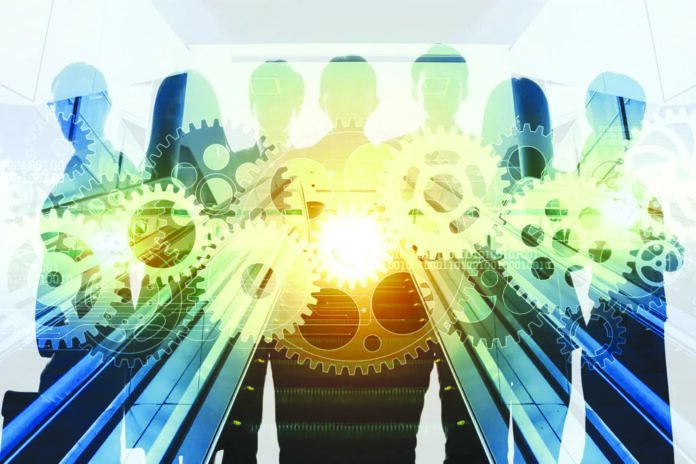In this digital age of Artificial Intelligence (AI), the adoption of smart, data-driven technologies in enterprise applications is happening at an unprecedented rate, which is disrupting traditional workplace strategies and transforming the business landscape like never before. Services and solutions leveraging AI, such as virtual assistants, chatbots, facial recognition systems, voice search, and self-driving vehicles, are no longer science fiction stories of yesterday. They are now a reality, affecting every aspect of the modern world.
At the forefront of all disruptive technologies is AI, and its subset, Machine Learning (ML). Both are the key drivers of the Industry 4.0 revolution. AI has taken over numerous industries and transformed them beyond recognition. From self-driving cars to virtual assistants, AI has become an integral part of our daily lives.
However, this progress has also sparked debates and raised concerns about the impact of AI on society. While some hail it as the solution to all our problems, others fear that it may bring about our downfall.
On one hand, AI has the potential to solve some of the world’s most pressing problems. It can help us tackle climate change by optimizing energy consumption and reducing carbon emissions. It can also revolutionize healthcare by aiding doctors to make more accurate diagnoses and develop personalized treatments. In addition, AI can boost productivity and efficiency in various industries, leading to economic growth and job creation. On the other hand, the rise of AI also presents significant challenges and risks. One major concern is the impact on employment, as AI has the potential to automate many jobs currently performed by humans. This could lead to widespread job displacement and economic inequality, as those without the necessary skills to work with AI will be left behind.
Furthermore, there are concerns about the ethical implications of AI, particularly with regards to privacy and security. As AI systems become more advanced, they may be able to access and use sensitive personal data, leading to potential abuses. Another risk of AI is the potential for unintended consequences. As AI systems become more complex, it becomes increasingly difficult to predict their behaviour and the outcomes of their actions. This raises concerns about the possibility of unintended consequences, such as bias in decision-making or unintended harm to humans. In addition, the use of AI in warfare and other military applications raises ethical concerns about the potential for autonomous weapons and the loss of human control over decision-making.
In a nutshell, while AI presents many opportunities for progress and innovation, it also poses significant risks and challenges. It is important for society to carefully consider the potential impact of AI and to take steps to ensure that it is used in a responsible and ethical manner.
The first instance of AI can be traced back to ancient Greece, where philosopher Aristotle discussed the concept of syllogism, a form of deductive reasoning used to draw conclusions from two given statements.
The human brain has about 100 billion neurons, while the largest AI models developed so far have only about 175 billion parameters. This means that AI is still far from replicating the complexity and flexibility of the human brain. But it is being claimed that GPT-4 will have been trained on 100 trillion parameters versus GPT-3’s 175 billion parameters, which would make GPT-4 500 times more powerful.
Some AI systems have developed their own language to communicate with each other. In 2017, researchers at Facebook had to shut down an AI system they were developing because it had created its own language that humans could not understand.
Moreover, AI has been used to create music and art. In 2018, an AI-generated portrait sold at an auction for $432,500, which was 45 times its estimated price. AI is being used to develop new materials for various industries, including aviation, construction, and healthcare. For example, AI has been used to develop stronger and more lightweight materials for aeroplane parts, which can help reduce fuel consumption and carbon emissions.
In Japan, there is a hotel staffed almost entirely by robots. The Henn-na Hotel, which means “Strange Hotel,” uses robots for tasks such as check-in, room service, and cleaning. AI is also being used to help preserve endangered species. For example, researchers are using AI to analyze camera trap images to identify and track individual animals, which can help with conservation efforts.
According to a study by Creative Strategies, 96 percent of Android consumers and 98 percent of iPhone consumers use Google and Apple’s AI-based digital assistants – ‘OK Google’ and ‘Siri’. The study further highlights that 51 percent of consumers use digital assistants in cars, 39 percent in homes, 6 percent in public places, and 1.3 percent at work. AI technology is ubiquitous, with approximately 77% of devices today utilizing AI in some capacity. The growth of AI startups has increased 14-fold since 2000, and this trend is expected to continue. According to C-level executives, AI is a powerful tool for driving growth, with 84 percent of them believing that adopting and leveraging AI is essential to meet growth objectives. The global AI market is thriving, with a projected market size of $190.61 billion by 2025, representing a compound annual growth rate of 36.62%. By 2030, AI is expected to contribute $15.7 trillion to the world’s GDP, boosting it by 14%. The number of AI assistants is projected to surpass the global population, with forecasts indicating that there will be 8.4 billion AI-powered digital voice assistant units in the world by 2024.
As per the Future of Jobs Report 2020 by the World Economic Forum, the pervasive adoption of technology is poised to trigger a significant metamorphosis in the nature of jobs, tasks, and skill requirements, with far-reaching implications for the global workforce. The report highlights a disquieting statistic, revealing that nearly half of all businesses, constituting a staggering 43 percent, are poised to undertake personnel reduction measures in response to the impending wave of technology integrations. Furthermore, the report also prognosticates that within the next five years, employers will initiate a paradigm shift by equally apportioning tasks between human employees and automated systems, leading to the displacement of over 85 million jobs.
In a nutshell, while AI presents many opportunities for progress and innovation, it also poses significant risks and challenges. It is important for society to carefully consider the potential impact of AI and to take steps to ensure that it is used in a responsible and ethical manner.
This includes investing in education and training to prepare people for the changing job market, as well as implementing regulations and safeguards to protect against potential harms. Ultimately, the success of AI will depend on our ability to strike a balance between innovation and responsibility. Therefore, in this age of disruption, upskilling is mandatory for survival.























